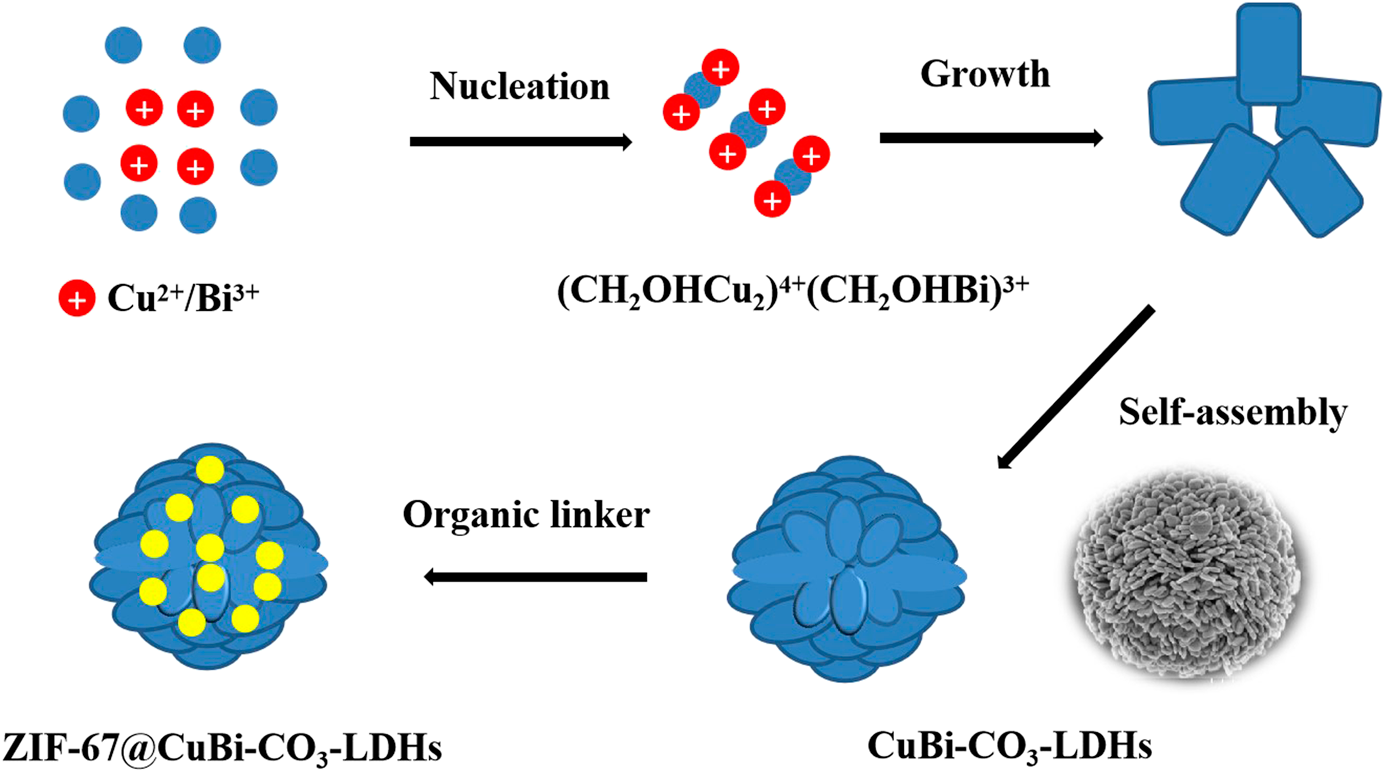Crossref Citations
This article has been cited by the following publications. This list is generated based on data provided by
Crossref.
Chee, Tien-Shee
Tian, Zhenjiang
Zhang, Xingwang
Lei, Lecheng
and
Xiao, Chengliang
2020.
Efficient capture of radioactive iodine by a new bismuth-decorated electrospinning carbon nanofiber.
Journal of Nuclear Materials,
Vol. 542,
Issue. ,
p.
152526.
Qin, Jianxian
Zhang, Wei
Chen, Yuantao
Liu, Rong
and
Fan, Yuanrui
2021.
Zinc-based triazole metal complexes for efficient iodine adsorption in water.
Environmental Science and Pollution Research,
Vol. 28,
Issue. 22,
p.
28797.
Rahim, A.H.A.
Majid, S.R.
Sim, Cheng-Kim
Yusuf, S.N.F.
and
Osman, Z.
2021.
Synthesis and electrochemical evaluation of cobalt-based ZIF-67 with its potential as direct use electrode materials for supercapacitors.
Journal of Industrial and Engineering Chemistry,
Vol. 100,
Issue. ,
p.
248.
Bashir, Mohamed Bashir Ali
Salih, Ethar Yahya
Sabri, Mohd Faizul Mohd
Rajpar, Altaf Hussain
Badruddin, Irfan Anjum
Hussein, Mohd Zobir
and
Al-Jumaili, Batool Eneaze
2021.
In-Depth Thermal, Microstructural and Photoluminescence Analysis of Mesoporous ZnO/ZnAl2O4-MMO: The Effect of Molar Ratio.
ECS Journal of Solid State Science and Technology,
Vol. 10,
Issue. 10,
p.
106006.
Tian, Zhenjiang
Chee, Tien-Shee
Zhu, Lin
Duan, Tao
Zhang, Xingwang
Lei, Lecheng
and
Xiao, Chengliang
2021.
Comprehensive comparison of bismuth and silver functionalized nickel foam composites in capturing radioactive gaseous iodine.
Journal of Hazardous Materials,
Vol. 417,
Issue. ,
p.
125978.
Nikpour, Soghra
Ansari-Asl, Zeinab
and
Sedaghat, Tahereh
2022.
Fabrication and characterization of polystyrene/Fe-MOF composite beads for iodine uptake.
Inorganic Chemistry Communications,
Vol. 136,
Issue. ,
p.
109141.
Liu, Xuewei
Zhang, Anrui
Ma, Ran
Wu, Bo
Wen, Tao
Ai, Yuejie
Sun, Mingtai
Jin, Jie
Wang, Suhua
and
Wang, Xiangke
2022.
Experimental and theoretical insights into copper phthalocyanine-based covalent organic frameworks for highly efficient radioactive iodine capture.
Chinese Chemical Letters,
Vol. 33,
Issue. 7,
p.
3549.
Baby, Rabia
Hussein, Mohd Zobir
Abdullah, Abdul Halim
and
Zainal, Zulkarnain
2022.
Nanomaterials for the Treatment of Heavy Metal Contaminated Water.
Polymers,
Vol. 14,
Issue. 3,
p.
583.
Narouie, Sabereh
Rounaghi, Gholam Hossein
Saravani, Hamideh
and
Shahbakhsh, Mehdi
2022.
Iodine/iodide-doped polymeric nanospheres for simultaneous voltammetric detection of p-aminophenol, phenol, and p-nitrophenol.
Microchimica Acta,
Vol. 189,
Issue. 8,
Chang, Sen
Wang, Kunjun
Wang, Longjiang
Song, Xuemei
Liu, Jingguo
Chen, Jianli
Yang, Kai
Zhang, Zhiquan
and
Li, Yongguo
2022.
Effects of calcination rate and temperature on microstructure and gaseous iodine capture capacity of 3DOM-SiO2 aerogels.
Progress in Nuclear Energy,
Vol. 151,
Issue. ,
p.
104328.
Hao, Yuxun
Tian, Zhenjiang
Liu, Chuanying
and
Xiao, Chengliang
2023.
Recent advances in the removal of radioactive iodine by bismuth-based materials.
Frontiers in Chemistry,
Vol. 11,
Issue. ,
Liu, Kuan-Guan
Bigdeli, Fahime
Sharifzadeh, Zahra
Gholizadeh, Shahin
and
Morsali, Ali
2023.
Role of metal-organic framework composites in removal of inorganic toxic contaminants.
Journal of Cleaner Production,
Vol. 404,
Issue. ,
p.
136709.
Salem, Mansour A.S.
Khan, Amjad Mumtaz
Manea, Yahiya Kadaf
Qashqoosh, Mohsen T.A.
and
Alahdal, Faiza A.M.
2023.
Highly efficient iodine capture and ultrafast fluorescent detection of heavy metals using PANI/LDH@CNT nanocomposite.
Journal of Hazardous Materials,
Vol. 447,
Issue. ,
p.
130732.
Wang, Chaonan
Yao, Huiqin
Cai, Zidan
Han, Senkai
Shi, Keren
Wu, Zhenglong
and
Ma, Shulan
2023.
[Sn2S6]4– Anion-Intercalated Layered Double Hydroxides for Highly Efficient Capture of Iodine.
ACS Applied Materials & Interfaces,
Hu, Xi
Zheng, Wanying
Wu, Mengcheng
Chen, Lingyun
and
Chen, Shaowei
2023.
Composites of metal-organic frameworks (MOFs) and LDHs for energy storage and environmental applications: Fundamentals, progress, and perspectives.
Sustainable Materials and Technologies,
Vol. 37,
Issue. ,
p.
e00691.
Gong, Chun-Hui
Li, Zhi-Ying
Chen, Kai-Wei
Gu, Ao-Tian
Wang, Peng
and
Yang, Yi
2023.
Synthesis and characterization of Cu2O@Cu/Al-CLDH for efficient adsorption of iodide anions in aqueous solutions.
Journal of Radioanalytical and Nuclear Chemistry,
Vol. 332,
Issue. 7,
p.
2793.
Sacourbaravi, Reza
Ansari-Asl, Zeinab
and
Darabpour, Esmaeil
2023.
Magnetic polyacrylonitrile/ZIF-8/Fe3O4 nanocomposite bead as an efficient iodine adsorbent and antibacterial agent.
Chinese Journal of Chemical Engineering,
Vol. 61,
Issue. ,
p.
210.
Yang, Yang
Fu, Yaomei
Tian, Yiran
Zhao, Liang
Qin, Chao
Wang, Xinlong
and
Su, Zhongmin
2023.
Efficient iodine capture by metal–organic cubes based on hexanuclear vanadium clusters.
Inorganic Chemistry Frontiers,
Vol. 10,
Issue. 21,
p.
6221.
Shi, Qingkai
Cheng, Min
Liu, Yang
Wang, Jun
Zhang, Gaoxia
Li, Ling
Du, Li
Wang, Guangfu
and
Liu, Hongda
2024.
In-situ generated MOFs with supportive LDH substrates and their derivatives for photo-electrocatalytic energy production and electrochemical devices: Insights into synthesis, function, performance and mechanism.
Coordination Chemistry Reviews,
Vol. 499,
Issue. ,
p.
215500.
Shi, Qingkai
Zhang, Gaoxia
Cheng, Min
Liu, Yang
Wang, Jun
Wang, Guangfu
Chen, Ao
Deng, Si
Li, Qi
Du, Yating
and
Kang, Huayue
2024.
Dazzling construction and derivation of metal–organic frameworks with layered double hydroxide substrates in environmental field: Insight into synthesis, performance and mechanism.
Applied Materials Today,
Vol. 38,
Issue. ,
p.
102192.



